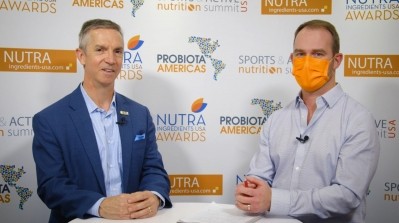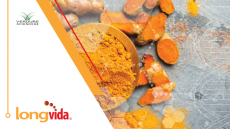Expanding FDA's tool box, fending off state laws among priorities laid out at CRN meeting

Mister made his remarks at the Council for Responsible Nutrition’s annual member meeting, held this year in Laguna Niguel, CA. Mister’s address to members was part of the organization’s annual business meeting. The day’s agenda also included presentations on fostering innovation and achieving workplace diversity by reforming the mindset of the leadership circle.
Mister noted that the past year has been very good for the supplement industry on several fronts. Sales have hit an all time high, but storm clouds have gathered on the horizon, including the regulatory limbo surrounding CBD and the still unsettled question of the status of NAC. In addition, the final draft of the New Dietary Ingredients Guidance continues to gather dust on the shelf.
Mister laid out four main action points for the CRN membership and the wider industry. Among the two listed above, he also put forward the idea of developing new tools and additional funding for FDA as well as placing an emphasis on increased communication with consumers.
New tools for FDA
On developing new enforcement tools Mister noted that increased FDA funding lies at the heart of the matter. He observed that the supplement industry continues to grow, but FDA’s ability to monitor the exploding market has not. Data presented earlier in the meeting showed the heightened demand for supplements during the pandemic helped the dietary supplements market smash the $50 billion barrier and push on to $55 billion in overall size.
For the new tools that FDA could develop with more resources, Mister said a primary goal should be a Mandatory Product Listing, for which CRN’s own Supplement OWL provides a useful model.
“This should be a birth certificate, not a drivers license,” Mister said. “It should not be overly burdensome—or costly to companies. It should not hinder or slow down entry to market.”
“Likewise, it should not become a fishing expedition, allowing FDA to collect extraneous information that is not otherwise publicly available,” he added.
On the issue of CDB enforcement, Mister said, “Unfortunately, it has become apparent that FDA is not going to solve this problem on its own—Congress need to step in.”
Mister said CRN is throwing its weight behind HR 841, which has the bipartisan support of more than 30 US Representatives.
But the push to get CBD on the market includes pitfalls, Mister said. The call for FDA to set a maximum safe level of CBD exposure — something it does not have the authority to do for other dietary ingredients — could set a dangerous precedent, he said.
Dealing with regulations coming out of woodwork
As the second priority for the year ahead, Mister said the industry must prepare for additional attempts by state legislatures to write their own laws pertaining to the supplements industry.
“This past year, we fought back efforts to impose mandatory age restrictions on weight-loss and sports nutrition products in three states,” Mister said.
“But these bills will come back. That’s why we are getting ahead of these efforts. CRN is also conducting a scientific safety review of the most popular weight management ingredients to demonstrate anew the strong margins of safety these products enjoy,” he added.
Other areas of extra-federal enforcement include the plethora of state laws regarding CBD as well as class action law firms lining up to fill a perceived federal regulatory void.
And last but not least, Mister said FDA is actively participating in CODEX meetings. This might seem a dense — and glacial — bureaucratic process, but decisions taken there can affect market access around the globe, and the supplement industry needs a seat at that table.
Strengthening self regulation
A third priority is CRN’s push for increased self regulation, Mister said. In addition to the OWL, Mister said CRN’s Code of Ethics for members provides a useful framework for industry.
Mister said CRN is working to refine its approach to the use of proprietary blends, balancing the protection of intellectual property this label practice affords again the way blends can be used to facilitate ‘fairy dusting,’ where smidgens of ingredients are added so their names might appear on packages to catch the eye of unwary consumers.
Educating consumers
Finally, Mister said the industry must do a more through job of educating its consumers.
“To maintain the high levels of confidence this industry has achieved, we need to dialogue with our stakeholders, and even our critics, and show them the benefits of our products,” he said.
Among these efforts, Mister highlighted the ‘Vitamin D and Me’ campaign and an initiative called ‘It’s Probiotics: What’s Inside is Alive’ aimed at helping retailers put only the best products on the shelves.
“The common thread here is that the role of a vibrant trade association has never been more critical. At times when regulatory landscape is in flux, the solidarity of the industry is even more important,” Mister concluded.















